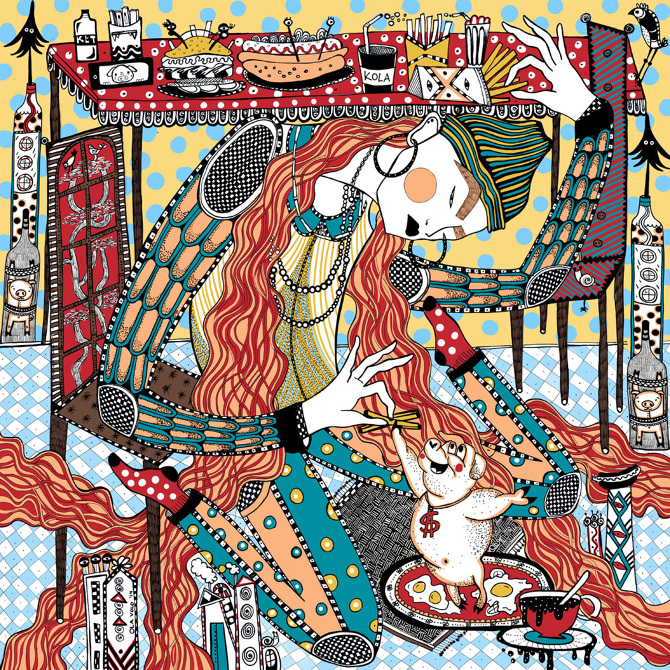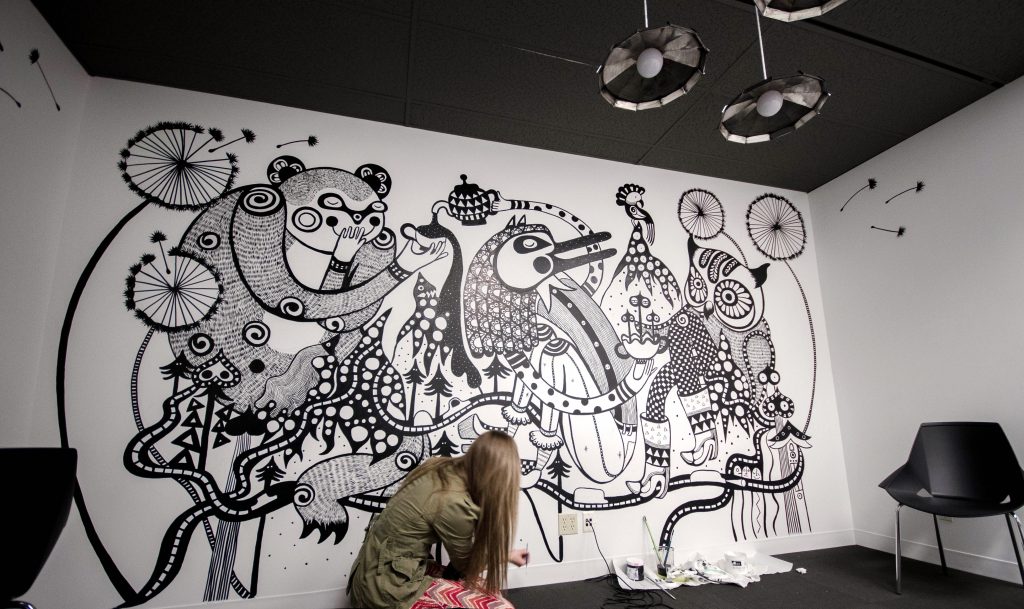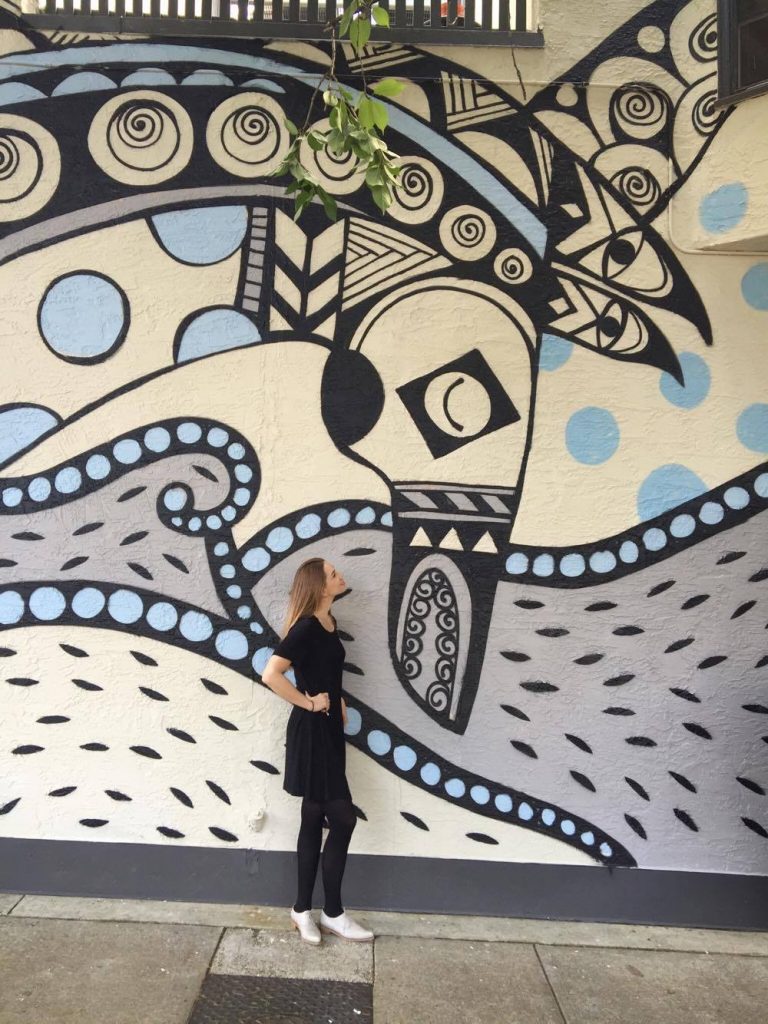6 Questions with Ola Volo
#growingwithriseThis new series aims to highlight creative personalities and disruptive thinkers who live, work and dream out of the box.
In the growing and vast landscape of mural artists, Ola Volo has stood out as one of Canada’s rising talents. The 27 year old, whose distinct style has lent her a growing social media following and hip brand deals, has been able to expertly tow the line between artist and businesswoman.
Despite producing art in an industry that tends to be dominated by men, Ola has carved a unique place for herself in Canada’s dynamic mural and graffiti scene. Drawing on themes from her childhood spent in Kazakhstan and Vancouver, Ola’s art is based heavily around the idea of storytelling and folklore. From 50 foot murals in Vancouver to the tiny labels of an organic product, the intricate patterns and surreal characters of her work enables it to be quietly subversive and uniquely feminine.
RISE was able to talk to the busy artist and learn about her inspirations, her growing list of clients and – of course – where she’s headed next.
Your art is incredibly unique and distinct. Where do you draw your inspiration from?
European folklore and West Coast folklore. Growing up in Vancouver, I was surrounded by deer and bears. It was unavoidable. But the patterns themselves are coming from Eastern European folklore … the rugs and clothing are very pattern heavy. I lived in Kazakhstan before moving to Canada, so that’s what I visually perceived as normal.
You seem to have lived so many places. Has that influenced your art?
I’ve lived in Kazakhstan, Vancouver, Holland, New York and Montreal. I’ve been a bit of a vagabond, but it’s important to be able to find inspiration from different environments and people. Especially if the work is very multicultural, you have to be able to put the work into different spaces and see how people react.
When I moved to New York City, everything was very saturated, the way people care so intensely about their aesthetic, it threw my work in a new, brighter direction. It became more saturated with colour. And when I’m working with clients, an Asian festival for example, I’m able to understand the patterns that come from a different culture and invent a way for it to get into my work.
What is the toughest part of your job?
There are always barriers in being an artist… I’ve been fascinated with producing mural work and public art work… so I ended up having to give up a bit of gallery practice. Accessible art is so important for me. My biggest challenge has been using a new medium; understanding how to use spray paint, how to work the equipment safely, being in a boys’ club.
Initially, I had to let go of the idea that I would simply be working from a studio doing illustration and design. I have to be open to traveling, merging myself into new languages to be able to communicate with clients. Staying open all the time.
You mention street art being a boy’s club. How do you think you’ve been able to navigate that?
The challenge was that I didn’t know a lot of female street artists. What does it mean to be a woman doing public art? How do I feel comfortable with that? Are you perceived differently? But honestly so far, it’s been really positive. My best experience has been speaking to other young women who are interested in doing the same.
The main thing I’ve had to understand is that sometimes it’s extremely taxing on your body. You’re almost working as a construction worker. You’re riding machines, wearing hard hats, boots. Not a lot of women are a part of that.
At most festivals, there still aren’t a lot of women. Female voices need to be heard and seen in public as a part of street. If more people can relate to public art, we’ll see more people becoming a part of it.
How do you manage the business side of your career? Contracts, clients, new business, travel?
The business side of art is the exact opposite of producing. It’s wearing a very different hat. But I’m lucky, I worked for a large marketing company in university, I understood marketing and managing clients.
I surrounded myself with friends who are really good at business. Having guidance is key. Just because you’re not taught business outright, that aspect of you can be found in your personality. If you’re an entrepreneur and comfortable with making your own rules, you’ll be able to share a vision with a client.
I do lots of things to enhance my business practice – travel, teaching, workshops, murals, illustration, editorial work. It’s ongoing.
You’ve worked with brands like Vega, Saje Wellness, Lululemon and soon, Starbucks. What can we expect to see from you in the coming months?
I just wrapped up teaching a course at a university in Michigan and now I’m back in Vancouver. Next, I’m off to Australia for some instillations and not doing any client work for a few weeks. That’s important. After that, I’m in LA during the spring, and back to Montreal for the summer!
This interview has been edited for length and clarity.
You can find Ola Volo’s work at the links below:
https://www.instagram.com/olavolo
Written by: Neha Chandrachud




